The Huascaran Experience — Part 1, 25/9 – 1/10 2025
25 September — Thursday
I woke up early (4 am), but as there is not much to do—all shops open at around 8 am—and I need some equipment before I can start hiking, I stay in bed and stare at the ceiling for a couple of hours.
Huaraz is not a particularly cultural town, it has few old buildings. The town is, however, very alive, the streets are buzzing and are filled with people selling fruit, meat, chicken, cheese, etc. It feels like there are more vendors than potential customers. All the vastly different foods smell together with exhaust fumes and a touch of sewage adds to a very confusing sensation of smells.
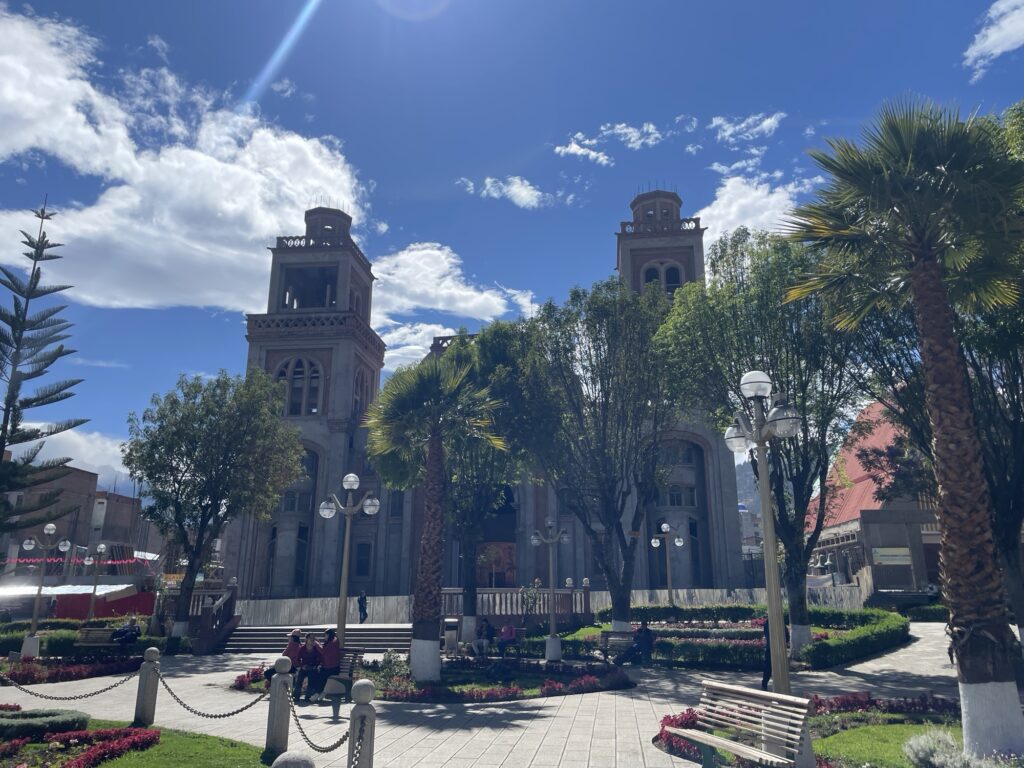
I cover most of the town while running all of my errands: camping gas, matches, tickets to the park entrance, food from various vendors: cheese, eggs, rice, avocados, nuts, chocolate, etc. Almost everything comes from different vendors.
It is 9:30 when I can finally start hiking. The plan is to go to Laguna Churup and set up camp. It’s about 1,500 m of elevation gain. Yesterday morning, I was at sea level, and now I’m hiking up to 4,500 meters, the highest I’ve ever been. The effect of the altitude will be interesting.
I start by following a series of roads and small trails, walking past many local farmers. They still use animals to plow the fields—old-school farming! It’s a shame that there is so much rubbish on the trails; otherwise, this would be an idyllic place.
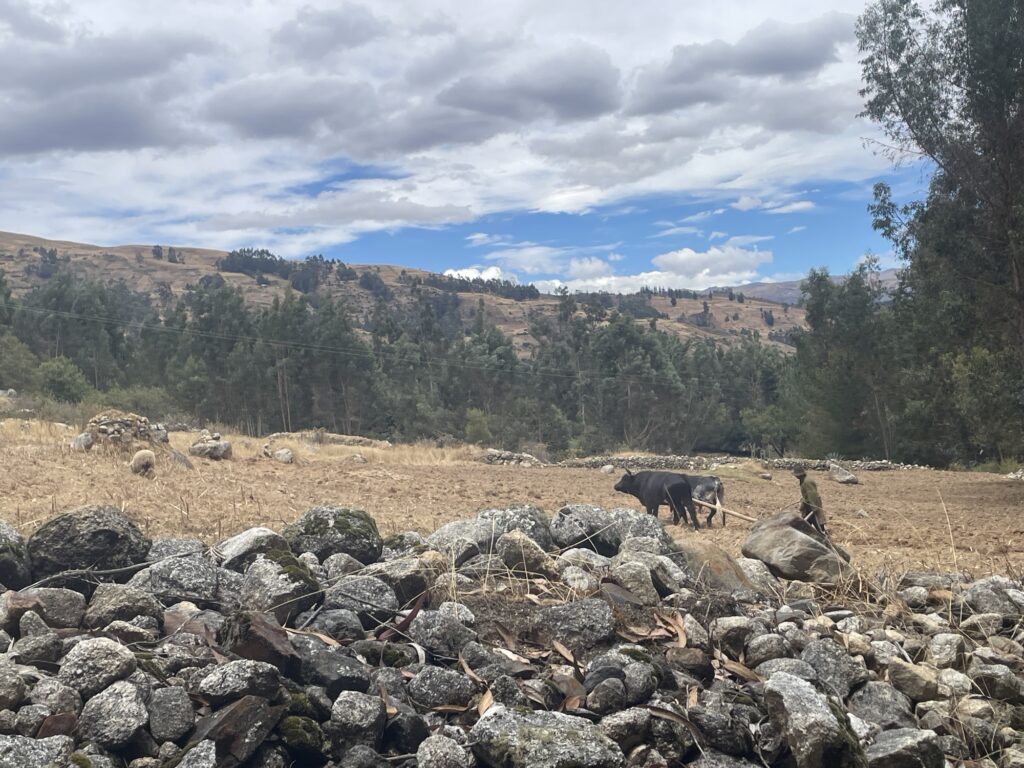
At around 4,000 meters I start to feel the elevation. My pulse is high and I’m breathing heavily. Most people do not recommend immediately pushing to high altitudes, but instead being sensible and taking some time to acclimatize. But where’s the fun in that? I want to test my limits.
But to be honest I’m a little worried. I don’t know much about altitude sickness. However, seeing as if I rest for only 20–30 seconds, my pulse goes way down and my breathing returns to normal, I reckon it’s fine to push on. I’m also carrying a 20+ kg backpack in steep uphills, so it is not exactly unreasonable that I will be struggling a little.
At 4,200 m I take a longer break, and after that, the remaining 300 meters of elevation actually feels easier than the previous 200 meters of elevation.
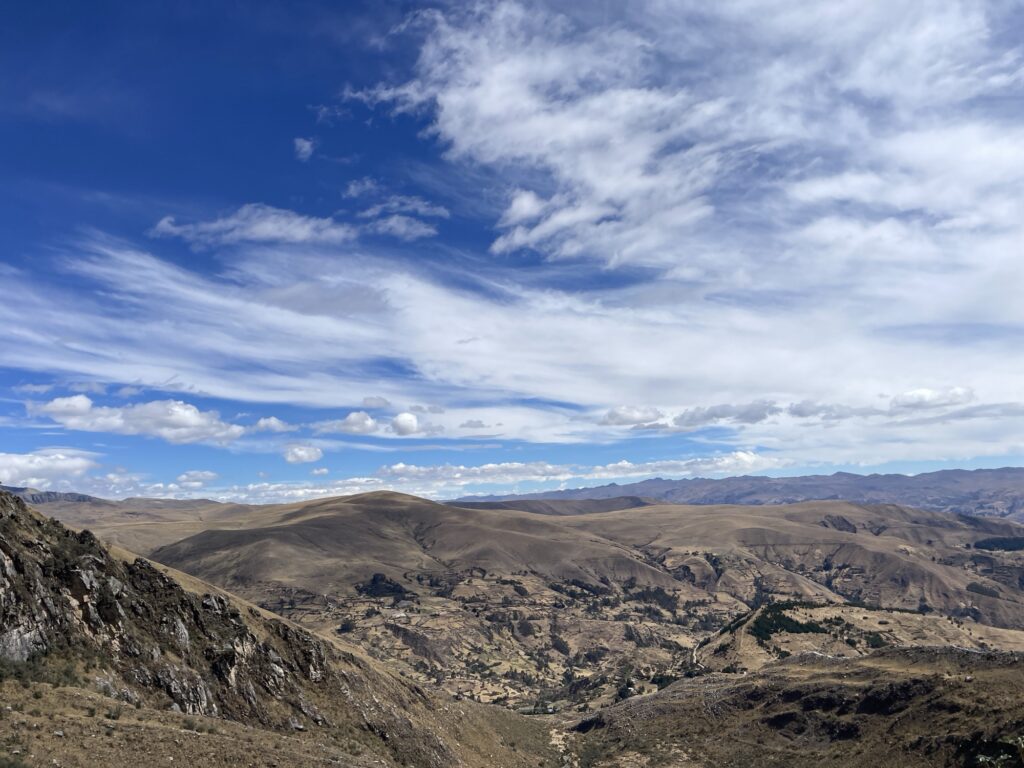
The plan was to camp at the lake, but the terrain will not allow that. Instead, I tack on some more elevation to get to a nearby campsite. When I arrive, I’m not that impressed. The campsite I previously passed at 4400 meters of elevation was much nicer so I decided to go back. This extra bit of training was really not needed. Not today!
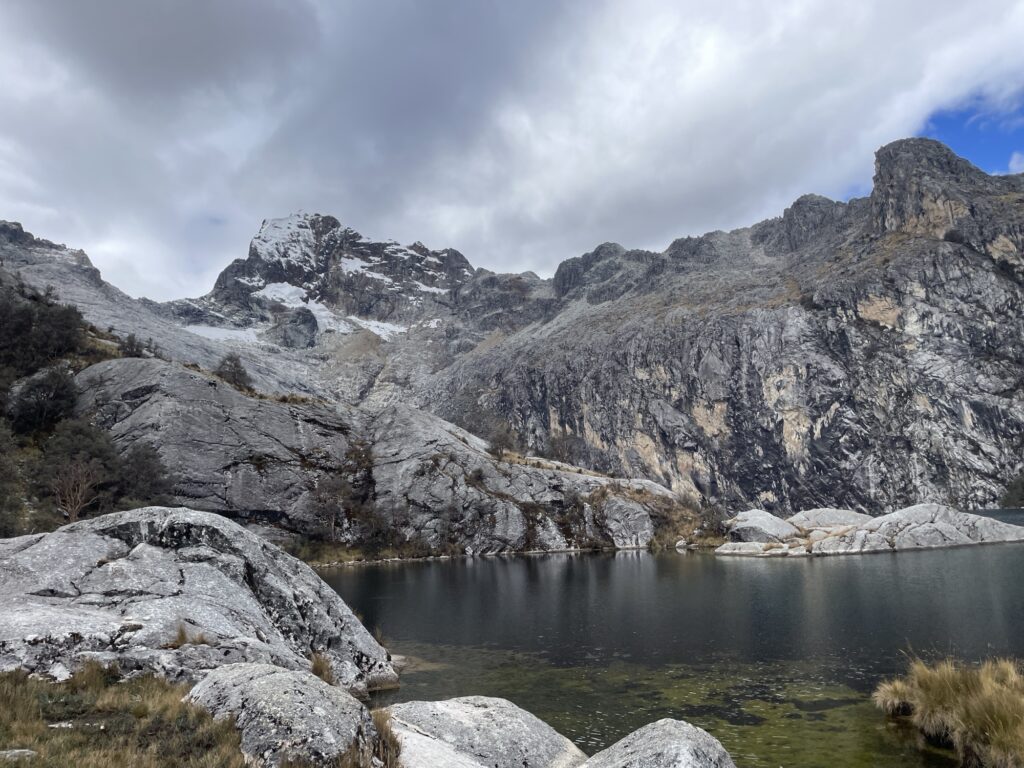
For dinner I cook eggs, rice, and olive oil. Simple, but after this day, delicious. However, I’m skeptical that I will have the patience for boiling rice in the future. It is a ”nice day activity”. After I walk around a bit and explore the surroundings, without the backpack it feels easy.
Despite the weather forecast calling for rain all afternoon, I experienced nothing but sun. Perfect day, almost a little too hot. Still, despite the warmth, all locals run around in jackets. Baffles me how they do not sweat like crazy.
26 September — Friday
At midnight I awoke from a strong headache feeling nauseous. I might not know much about altitude sickness, but I know these are the two most common symptoms. In addition, my resting heart rate is more than double normal values, it is much higher now than when I went to sleep.
I face a decision: to wait until morning and risk worse symptoms, or go down the mountain immediately in pitch-black darkness. I decided on the second option. I still feel physically strong, I’m in no way in a bad condition.
While returning down, I get to experience a fantastic night sky. And there is something tranquil about walking in darkness. At around 4000 meters the symptoms have reduced, and I spent a couple of hours lying on my back enjoying the night sky until I got cold, at which I continued to Huaraz.
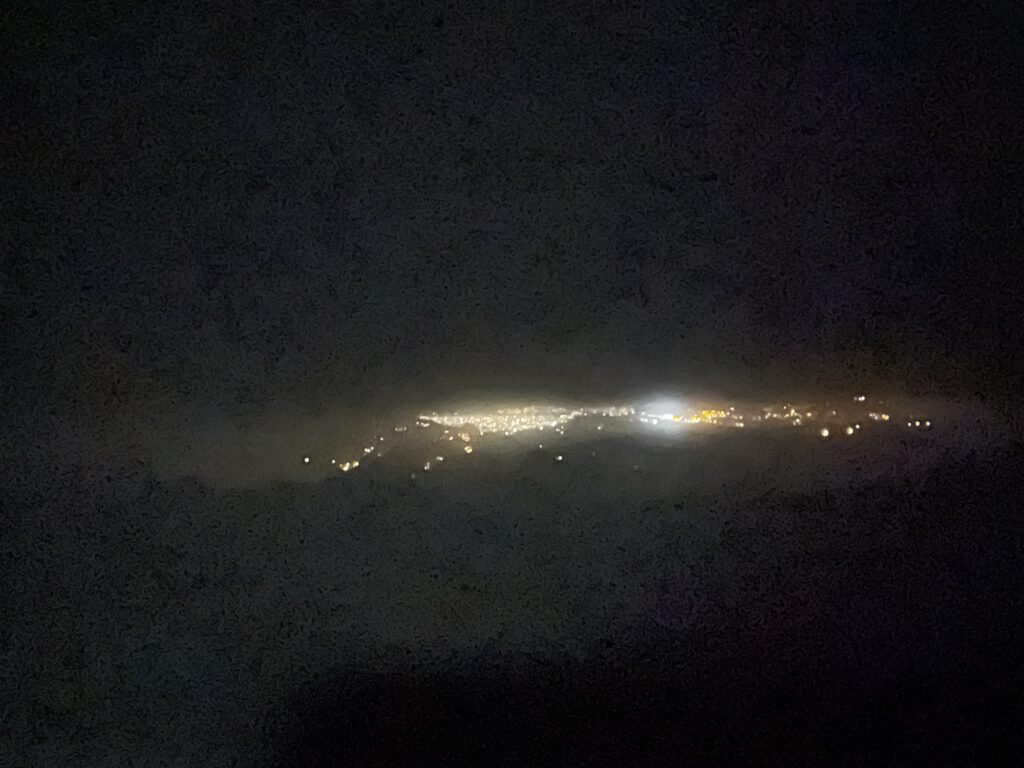
When arriving in Huaraz, all symptoms are completely gone. The question now is: what should I do at 5 a.m.? I went to the main park to sit on a bench and plan the coming days. I now have two problems: due to jet lag and altitude sickness, I have barely slept the last three days, and I now have to spend some time acclimatizing. This means my originally intended route is no longer viable.
I decided to book a hostel and for the 2-3 coming days engage in day treks to some high peaks before camping at high elevation again. I found a hostel with check-in time at 10:00 a.m.—highly valued given the current conditions. Today will be a day of rest!
I stayed at the park until around 8 a.m., just relaxing. I then spend about 1.5 hours going all over Huaraz trying to find a printer as I have some documents that require signing.
Testing my limits, check. Clearly I can not go immediately from sea-level to 4000+ meters. To those who say it was a bad idea to start with, you are not wrong but you are also not right ;). The feeling of altitude sickness is an experience by itself, and now I’m better prepared to sense early onset of symptoms in the future — live and learn!
27 September — Saturday
After a good night’s sleep, I feel fully rested and ready for a new day. The weather forecast reads UV-index 15. Right, long sleeves and long legs I guess.
I decided to go to the mountain range west of Huaraz, Coordilla Negra. While climbing upwards on a small road, I came across a couple of locals that had gotten stuck with their car. I helped them push it loose, something I almost immediately regretted when the black cloud exiting the exhaust pipe hit my face.
The Cordillera Negra mountain range is much less visited than the mountain range east of Huaraz, Cordillera Blanca, clearly indicated by the lack of litter. It is actually very clean. I follow the mountain range south towards Laguna Wilcacocha, where I’m hoping I will be able to take a bath.
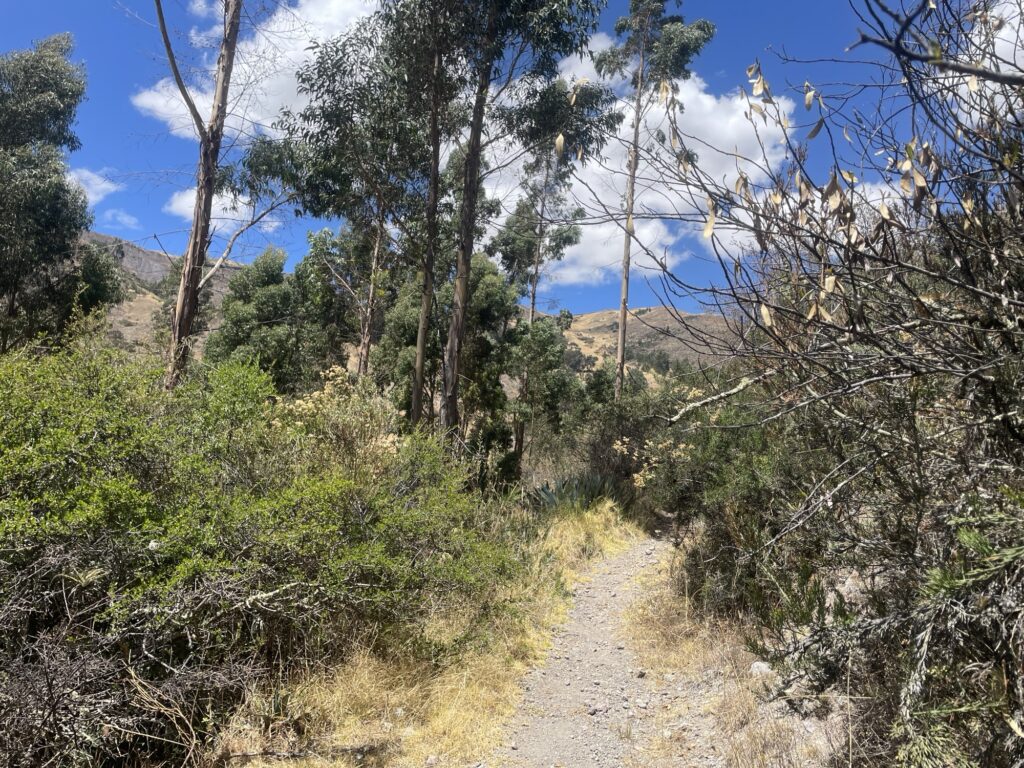
Cordillera Negra by itself is beautiful with large open fields of grass being grazed by cows — This is a place I could see myself retire too early, starting a little cow farm. But the main benefit is the breathtaking views of Cordillera Blanca.
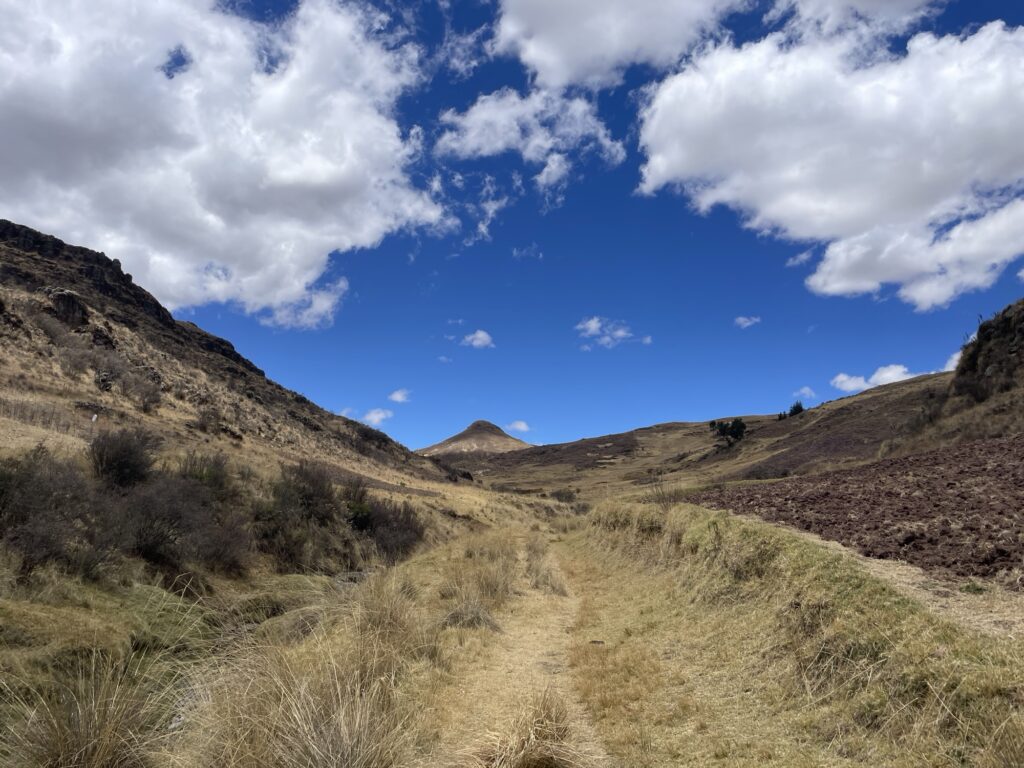
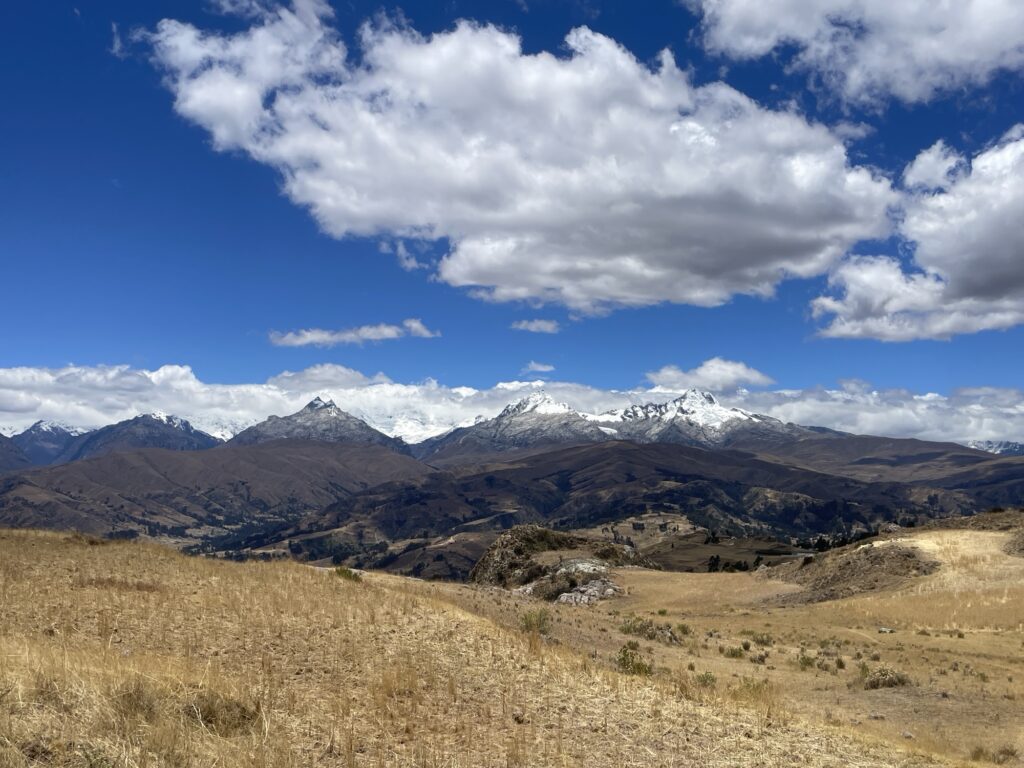
When I arrive at Laguna Wilacocha, I’m a bit disappointed that it’s not the lake as I had thought. It’s more of a swamp and not really suitable for bathing. Also, this is where all the tourists go so now the littering starts again. I stayed at the lake for a while, enjoying the views, before I went back to Huaraz on some small trails probably only used by the residents. Apart from at Laguna Wilacocha I met no other tourist the whole day.
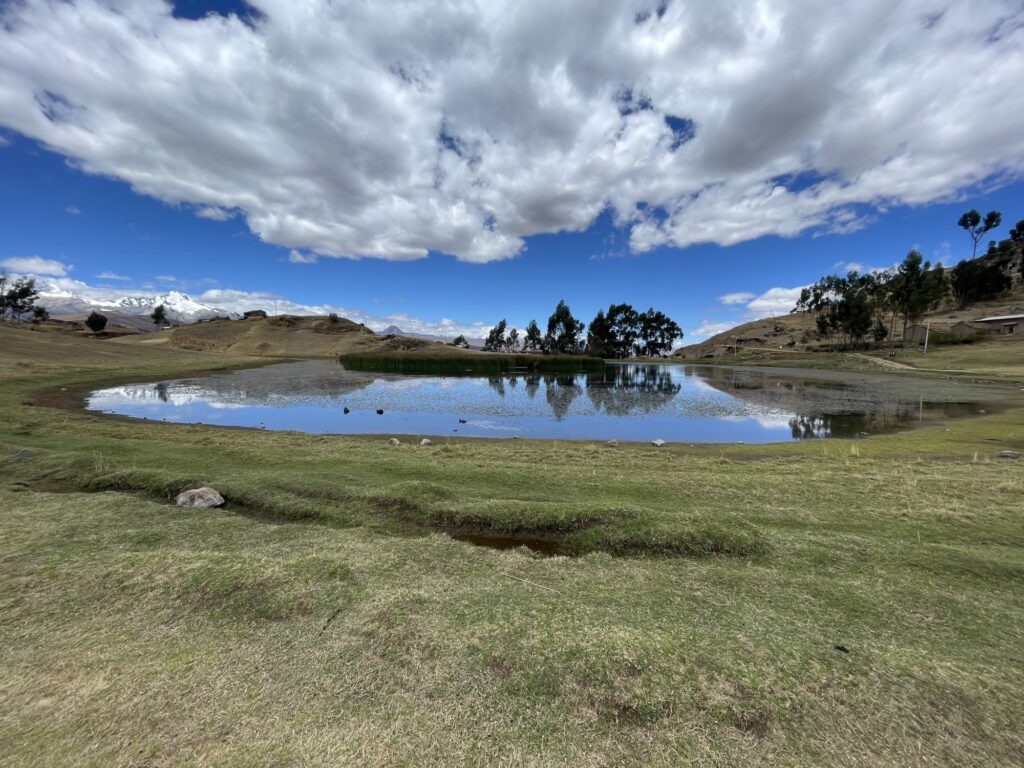
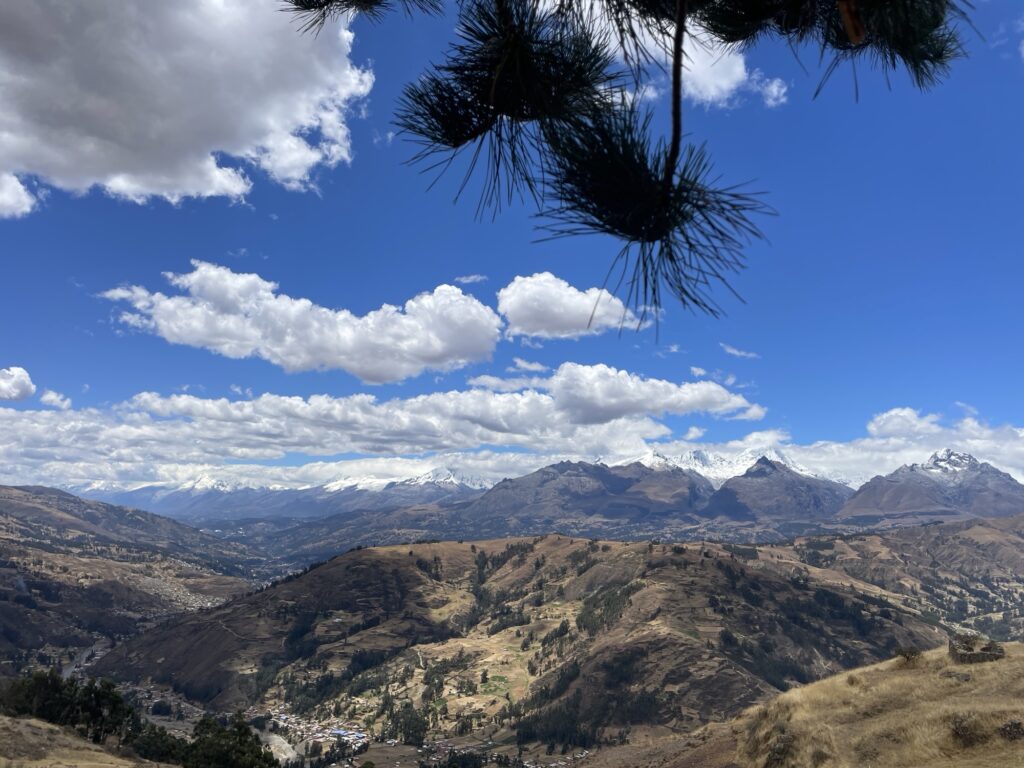
While going back on the small trails, I end up walking straight into a large fiesta and I immediately get invited and offered beer. I chatted with the locals for a while using my inadequate Spanish, while they used their not so good English.
Another perfect day, despite the weather forecast saying it should rain a large portion of the day it remained sunny throughout. The one thing I could be without though are all the darn dogs. There are dogs everywhere, constantly running up to me barking and being threatening. And some of them are fairly big, quite often there are also packs of dogs. Being surrounded by 5-6 large dogs does actually make me feel a bit uneasy. Om the bright side, I’m now convinced that the rabies vaccine was money well spent.
28 September — Sunday
Today just some easy hiking on some small trails. Going back to Huaraz, I tried one of the collectivos. Collectivos are minibuses operated by individuals. Basically you wave to the driver to make them stop, there are no fixed stops or timetables, and there are of course no seatbelts on the buses.
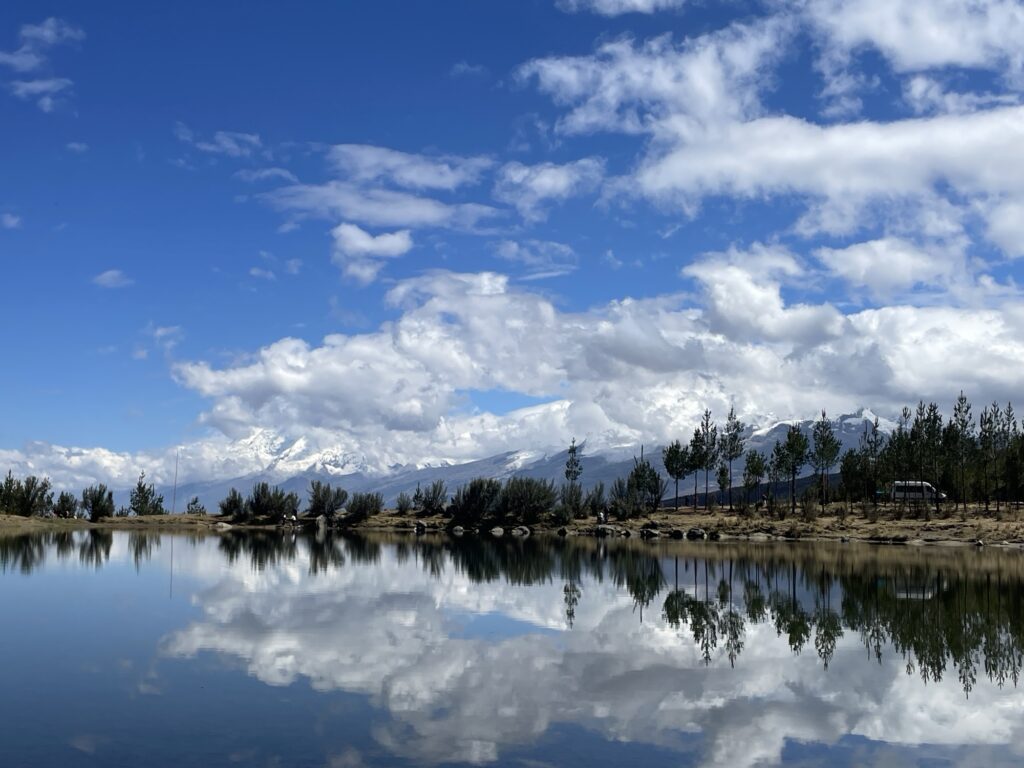
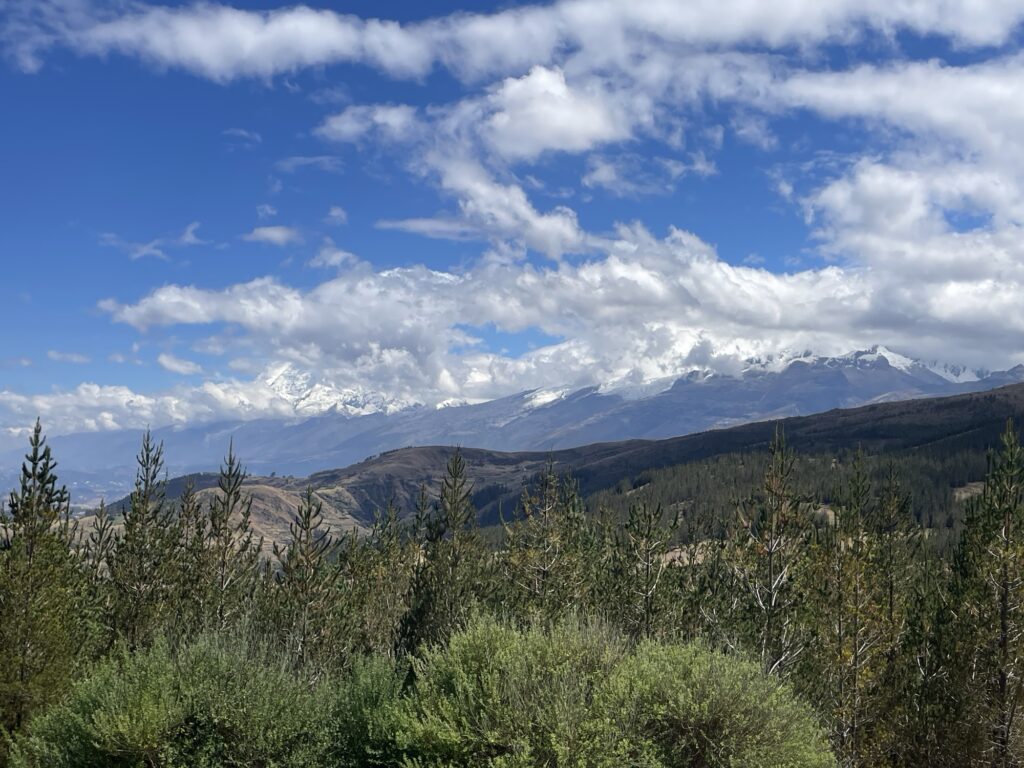
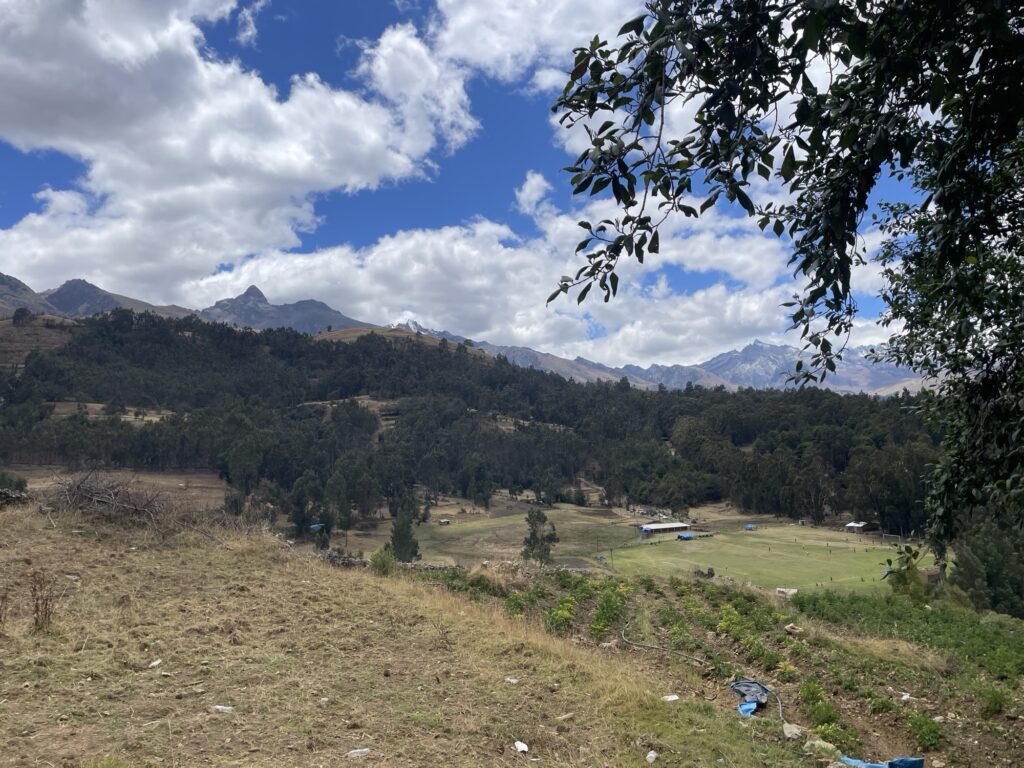
After several days of hiking around Huaraz, passing by many small high-altitude villages, walking on what constitutes roads in this country, I have but one observation: Toyota is king!
29 September — Monday
Hopefully I’m acclimatized by now, I will see tonight when I will try to sleep on 4400 meters of elevation again. The plan today is to go to the Refugio Ishinca. I’m curious about the standards of the Peruvian huts and today is the last day to find out as the huts closes on the 30th of September.
I take the bus to Paltay and from there I start the long walk upwards towards the refugio. The path follows an absolutely beatiful valley all the way to the hut. Pure hiking perfection. It feels much easier hiking today than it did a couple of days ago.
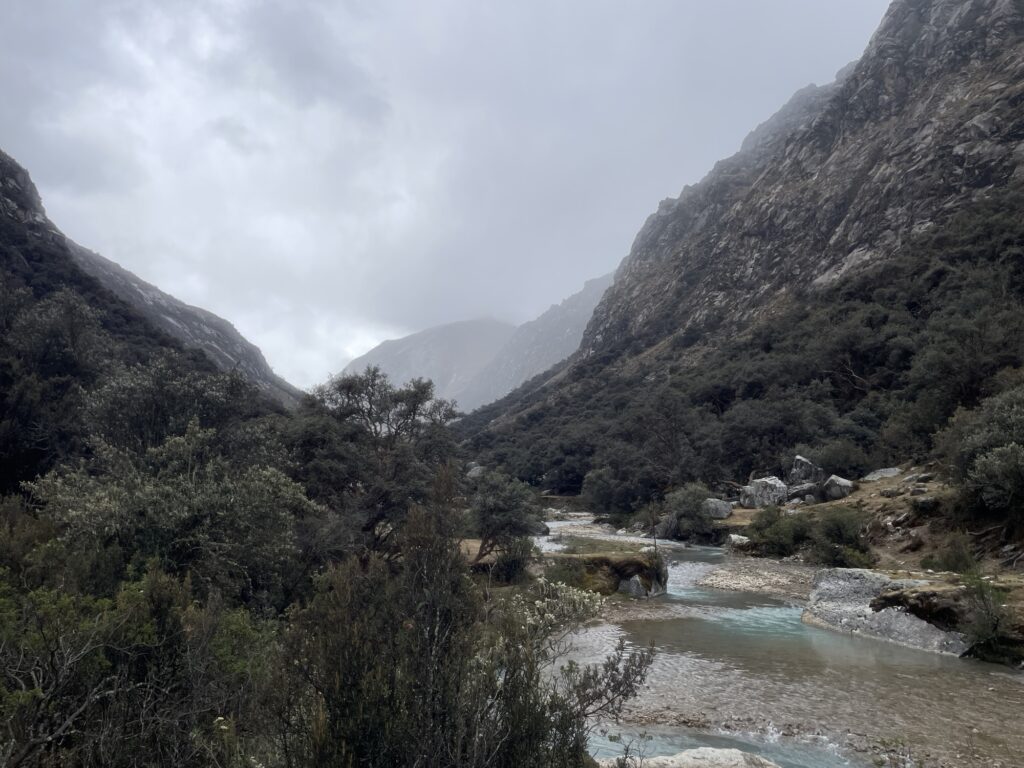
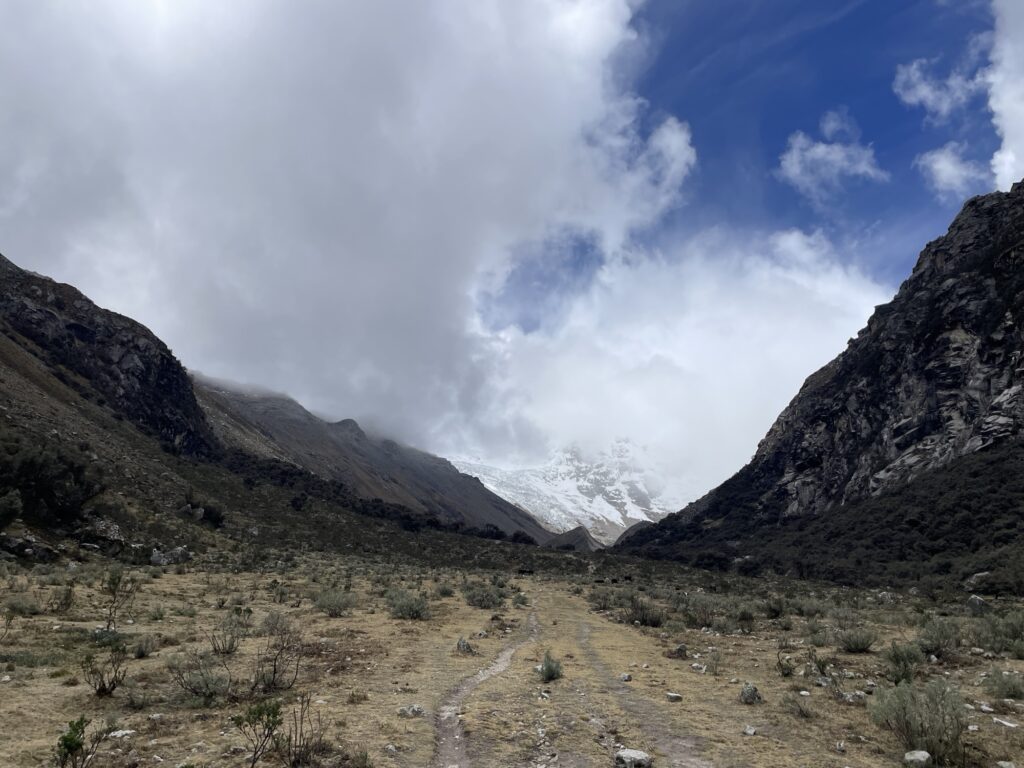
When I arrive at the hut there is a large campsite of around 20 tents. Apparently there is a mountaineering course and they are using the campground as base camp for excursions to nearby climb sites and glacier walks.
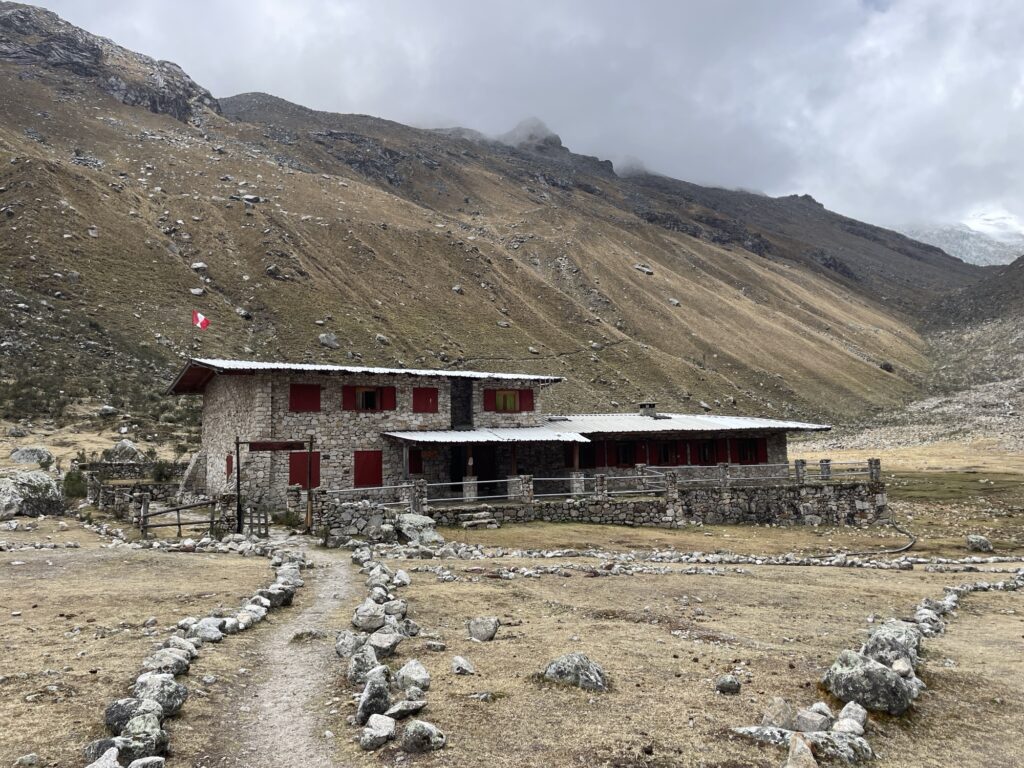
The hut looks like the Austrian huts I been to. It is so similar I’m starting to wonder if might not actually have been built by the Alperveinen organization. After all there are Alperveinen maps here of both the Cordillera Blanca and Negra to purchase. And the pictures on the wall are clearly off people with European decent (looks like Germans). The origin of the hut shall be reasearched when internet connection is restored. I decide to try the full pension which includes bed, dinner and breakfast. I have high hopes for the dinner. The Pervuian food has so far been excellent.
While I wait for dinner I chat we with one of the course guides who knows English. He is from Spain, but have lived in Peru for soon 30 years. Quite nice to actually be able to have a real conversation with someone. He tells me about all the expeditions he has been part of from New Zeeland, Alaska, Patagonia, Nepal, etc. I’m not at all jealous.
The entree and the desert was really good. The main course was ok, the steak was really good but the condiments were a bit boring. Time for bed. Hopefully no altitude sickness this time.
30 September — Tuesday
Feeling good, no headache or nausea. The breakfast was not particularly good, unfortunately.
Today I will cross Paso Uros at 5050 meters of elevation before heading down towards Honcopampa. The climb is exhausting, it is steep and muddy, one step up two steps down, and in the end it turns into a relatively difficult scrambling. Also, when I reach the top it starts hailing. The views though, makes it all worth it.
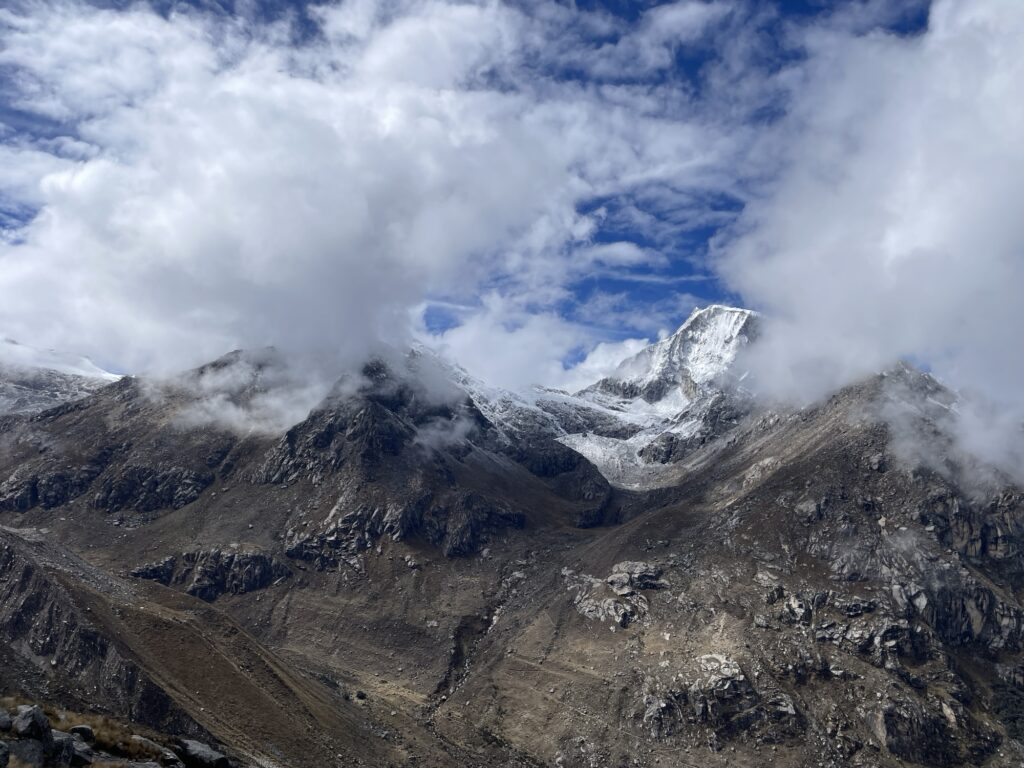
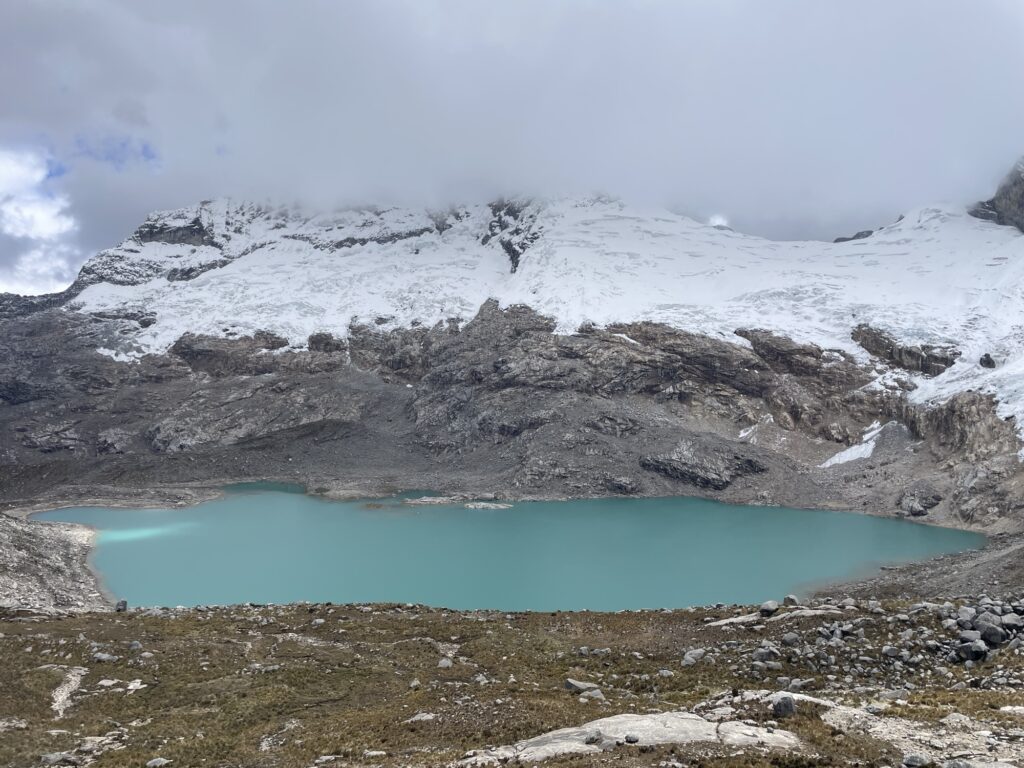
I follow the absolutely gorgeous valley to Honcopampa. On the way there are several scorched branches on the ground. I assume this is from last night’s thunderstorm. One of the branches is still red hot and emitting smoke, I spend some time putting it out.
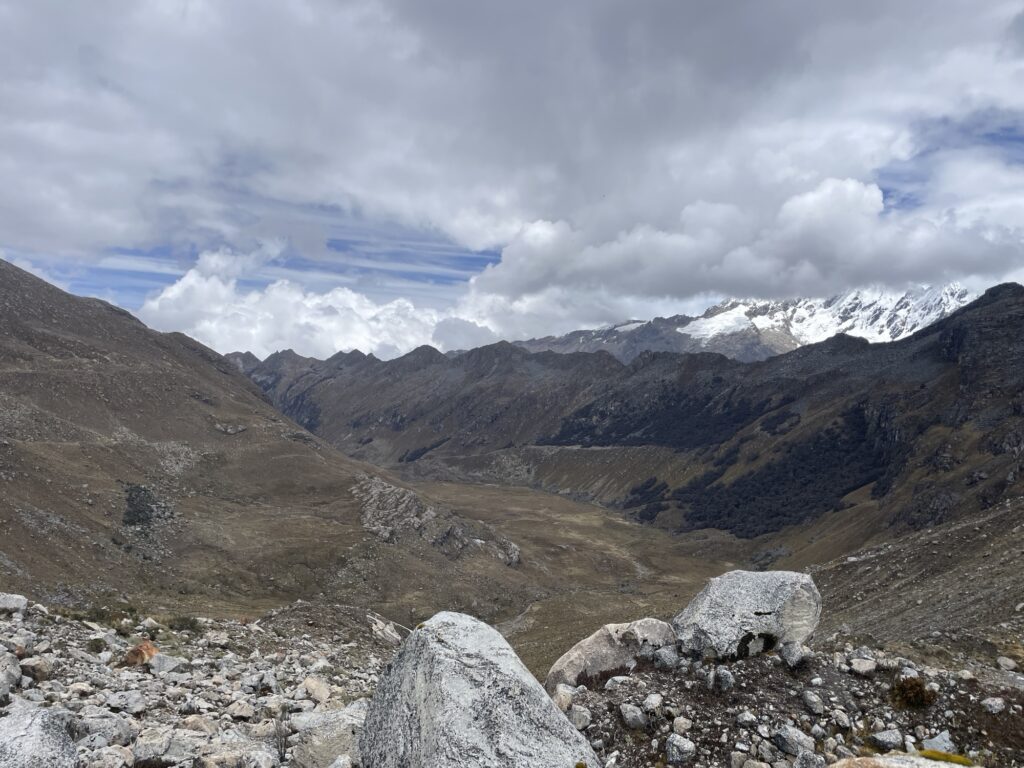
In Honcopampa I hope to find a collectivo to take me to Marcara. I ask a local where the collectivo is, there are none. He offers to call me a taxi, but just as he is about to call, a minibus driven by kids heading to Marcara comes along. And yes I do mean kids, no way they were 18-years old. Beggars cannot be choosy. An interesting ride later, I’m in Marcara where I catch a collectivo heading to Caraz.
From Caraz I will embark on the Santa Cruz Trek or a combination of the Santa Cruz Trek and the Alpamayo Circuit Trek depending on how I feel physically during the start of the Santa Cruz Trek. But first, one rest day. I’m feeling pretty beat, the high elevation has taken its toll and I’m not recuperating as fast as I usually do. Also, I will need some time to prepare food for the trek.
The two day trip, Paltay – Refugio Ishinca – Honcopampa, originally intended just to experience the Peruvian huts, turned out fantastic. It was some of the best hiking I have ever done. It had lush grasslands, amazing valleys, rivers and waterfalls, glaciers, snow and hail, and stretches with tropical vegetation. Highly recommended!
1 October — Wednesday
Rest day! Preparing for the Santa Cruz Trek.

